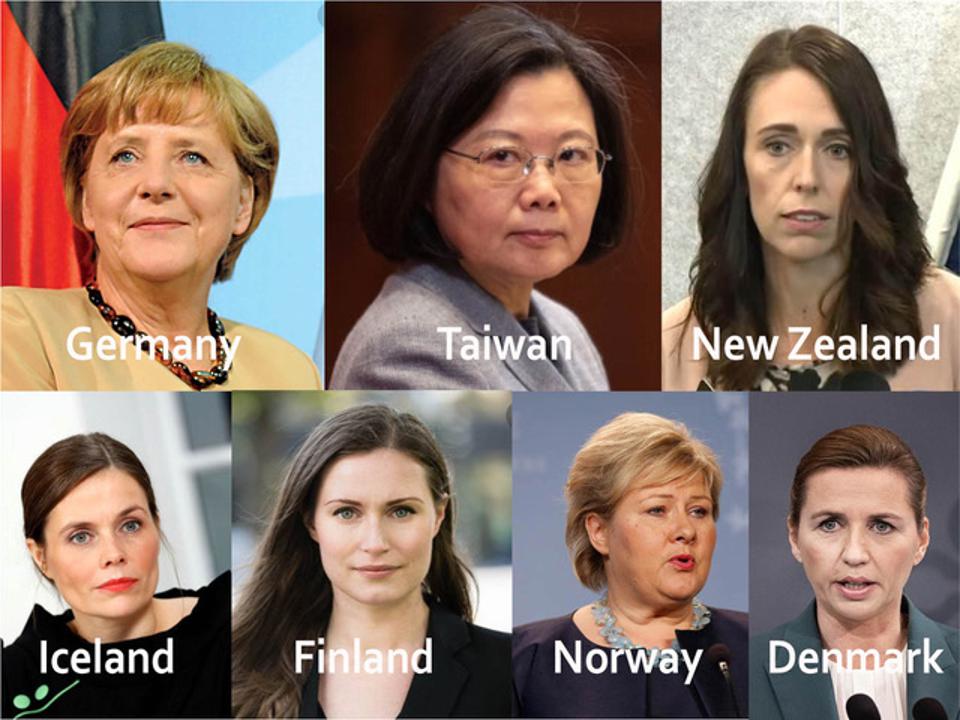“Perhaps the biggest tragedy of our lives is that freedom is possible.
Yet each day we listen to inner voices that keep our life small.”
Tara Brach
As we faced frightening and stressful times during the pandemic many of us became familiar with the vocabulary of fight, flight, and freeze responses to stress and trauma. When a threatening situation arises, our nervous system sets off an automatic response toward safety and protection. This process happens unconsciously, without us having to think or be intentional about it, with the goal of survival being the immediate priority. The brain prepares the body to deal with the threat in different ways: to engage with it aggressively (fight), to run away or avoid it (flight), or to shut-down and numb the pain if the danger is deemed to be insurmountable (freeze). In our modern world, these stress reactions are mostly triggered by emotional or social threats such as our fear of failure, loss of control, rejection, abandonment, and feelings of worthlessness. Although useful and necessary for coping with real danger, being chronically caught in the habit of these defensive responses severely compromises our physical and mental health.
The fawn response is a lesser known stress and trauma response mechanism that deserves much more attention than it gets. Natureza Gabriel Kram, in his book Restorative Practices of Wellbeing (2021), describes the fawn response as a survival structure that utilizes our capacity for connection to disarm a threat. It usually emerges in contexts where the source of danger is someone we are intimately connected with. In these circumstances fighting, fleeing, or freezing would not have achieved our adaptive goals either because the threatening figure is someone we depend on for our survival or that using a more overt defensive response would have worsened the potential harm. A lot of times the fawn response gets reinforced early in life as a way of coping with emotionally unavailable, critical, or abusive caregiving. In the absence of supportive and empowering connections, young children may become hyper-focused on pleasing parents and caregivers by being sensitive to their distress and taking care of their emotional needs.
Dr. Arielle Schwartz characterizes the fawn response as a pattern of pleasing and appeasing behaviors aimed at taking care of the needs of the aggressor in order to diffuse danger. It’s a rather sophisticated process that taps into the social engagement system, manifesting in different forms of accommodation that serve to befriend an aggressor in order to ensure one’s safety. In a broader sense, we could be dealing not only with physical aggression but as is often the case, our safety could be undermined by emotional threats—being harshly criticized or put down, shamed, rejected, and dismissed. The fawn response gets activated to manage these threats. Fawning behaviors commonly manifest as being overly agreeable or helpful; never being able to say no; constantly prioritizing the needs and happiness of the other over one’s own; and forfeiting one’s boundaries, rights, and needs to avoid being attacked or shamed. Perhaps not surprisingly, the fawn response has been observed to be more common in women than in men. Evolutionarily, women have had to defend themselves against male aggressors. However, fighting, escaping, or shutting down might not have been viable responses because they had children to protect and care for. Therefore, it became a matter of necessity for women to engage in a survival strategy that disarms aggressive and controlling male figures by turning toward them and by being over-accommodating to their needs.
As we can see, the fawn response can become a very deeply embedded behavioral pattern which patriarchal societies have culturally entrained.
Pleasing and appeasing behaviors have become implicit expectations in females, preserving the status quo of inequitably distributed power and resources that favor men. The perpetuation of fawning patterns has immense ramifications on women’s lives. Being brought up in families and communities where females are rewarded for fawning has kept our lives smaller than the horizon of opportunities that we deserve.
Psychologically, the consequence of fawning is that it leads us to abandon ourselves. We lose clarity about who we are and disconnect from our truth. Although fawning behaviors may appear functional and even socially desirable from the outside, on the inside what is really going on is a persistent bypassing of our internal signals. While we can project an image of adapting well to external demands, our nervous system is actually in a vulnerable state of threat because we don’t feel safe to be our authentic self. Beneath the surface, we are constantly experiencing stress from the invalidation of our true needs and desires. Women’s physical and mental health are believed to be negatively impacted by the habituation of the fawn response. World-renowned physician and trauma expert Dr. Gabor Maté in his book The Myth of Normal (2022) makes the case that women’s acculturation into society to automatically and compulsively prioritize the emotional needs of others while ignoring one’s own is associated with the very high prevalence of autoimmune diseases and non-smoking related cancers among women. It could also help explain why women make up a vast majority of chronic migraine sufferers (Migraine Research Foundation) and take twice as much antidepressants and anxiety pills compared to men. This is not to say that fawning behaviors are biologically determined, but that a patriarchal society thrusts this predicament upon women.
Women’s pathways to wellness need to consider the role that fawn response patterns play in keeping us entrenched in toxic stress cycles. People around us, most of the time those who are close to us, have been accustomed to our dutiful yeses, complying so as not to disrupt the comfort of old ways. Continuing the fight for women’s liberation means challenging ourselves to pull away the curtain that keeps our needs out of sight and daring to listen to our real self. What would happen if we stepped boldly into directing more care and attention to ourselves, to giving voice to our truth, and to saying no to the inequities we experience at home and at work? Where would these acts of self-love take us? Quite simply, they would bring us home.
Unlearning our fawn response is a journey into embracing the freedom that comes from self-authenticity and in recognizing the one treasure that we really are. We are in different circumstances and indeed some women struggle with more severe threats to their safety. Acknowledging the ways we get hooked into fawning is not about self-blame but a compassionate awakening. We can practice and take everyday steps to turn our caring gaze toward ourselves, gradually exploring the new territory of taking action on our behalf and being immensely proud of the courage we’ve found.
Practices in Unlearning our Fawn Response
1. Connecting with our Safety Anchors
Psychotherapist and author Deb Dana espouses a nervous system approach to resilience and wellbeing that emphasizes anchoring on safety. Genuine safety means honoring our internal signals to tell us when are feeling safe or unsafe about different situations. To strengthen our safety ancbors, we are invited to notice WHO, WHAT, WHERE, and WHEN we feel safe. Who are the people who make us feel safe? In which relationships do we feel heard and validated? What activities bring us a sense of safety and calm when we’re feeling overwhelmed? Which physical spaces support our feelings of safety and ease? What moments allow us to listen deeply to ourselves?
2. Self-Compassion
Unlike self-criticism which asks if you’re good enough, self-compassion asks what’s good for you? This is according to Dr. Kristin Neff, pioneer researcher on self-compassion. The practice of self-compassion calls for the integration of tenderness and fierceness. We practice the tender side of self-compassion by being with ourselves in an accepting way, comforting and reassuring ourselves, being present to our moments of difficulty without self-judgment. On the other hand, we exercise the fierce side of self-compassion by standing up to protect ourselves, to provide ourselves what we need, and motivate ourselves toward committed action. Sometimes it means saying no, drawing boundaries, and fighting injustice. Speaking our truth can be a form of fierce self-compassion. Dr. Arielle Schwartz suggests exploring incomplete conversations or unfinished business by journaling about the following prompts:
- When you hurt me I felt . . .
- The worst thing that you said or did was . . .
- What I was most afraid of was . . .
- What I wish I had said to you then, but never told you was . . .
- What you could never take from me is . . .
- I know that I am strong because . . .
- What I want you to know about me now is . . .
3. Boundary Clarity/Observing Limits
Natureza Gabriel Kram explains that “developing boundary clarity is about learning to tune into and experience, at a visceral level, the direct energy of the defensive responses.” Because fawning overrides the fight response, which is at times necessary for self-protection, practicing boundary clarity helps us reconnect with the limits that we’ve surrendered to accommodate others. One way to do this is to allow ourselves to experience and validate anger. Instead of automatically inhibiting anger, allow it, feel the biological energy of anger in the body, and invite it to take the form of an action toward assertive self-advocacy. It could mean expressing what we don’t feel good about, making a direct request to address our need, and perhaps sometimes pulling away from relationships that curtail our authenticity.
4. Allyship
We can draw strength and courage to end toxic stress cycles through the power of allyship. When we become aware of the cultural forces that shape the fawn response in females, it awakens us to the need for standing up together. Allyship means standing up for ourselves, for our mothers, our daughters, nieces, friends, co-workers and fully embracing our value. Allyship can be practiced in everyday life by assertively responding to micro-aggressions experienced by women. A Harvard Business Review article (2022) notes that most commonly, these micro-aggressions involve invalidation of competence, invalidation of physical presence, and diminishing or denying gender bias when it is brought up. It is important that we educate ourselves on what to look for, to speak up, and reach out to one another.
About the Author:
Dr. Joanna Herrera is a licensed psychologist in the Philippines and in California. She obtained Master’s and Doctoral degrees in Clinical Psychology from The Wright Institute in Berkeley, California and completed predoctoral and fellowship training at the UCSF-Benioff Children’s Hospital Oakland. She has been a clinical supervisor for MA/PhD clinicians, developed mental health programs, and became the director of a community mental health program in the San Francisco-Bay Area. She currently holds practice as a clinical psychologist, provides services and consultation to organizations, and is involved in the training and supervision of mental health professionals in the Philippines. Dr. Herrera is President and Co-Founder of We Thrive Consultancy and Wellbeing Services, Inc. and the Executive Director and Co-Founder of Circle of Hope, a non-profit organization. She started formal mindfulness training in 2008 and is a mindfulness practitioner. She is intensively trained in DBT (Dialectical Behavior Therapy), trauma-informed treatment, early childhood mental health, clinical supervision, and mindfulness-based clinical interventions among others.


